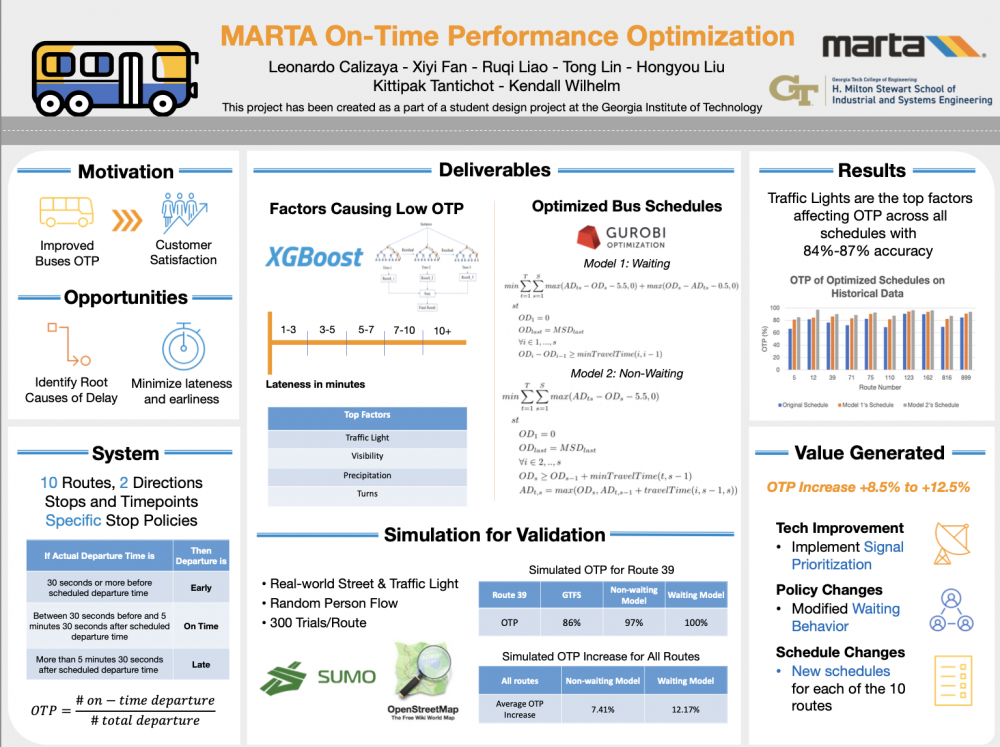Client Context
The team’s senior design client is the Metropolitan Atlanta Rapid Transit Authority (MARTA), the principal public transport operator in the Atlanta metropolitan area. MARTA provides service to 1.7 million patrons through a network of 113 bus routes and a rapid transit system. The system under study is a collection of 10 bus routes that MARTA believes to be problematic regarding on-time performance (OTP).
Project Objective
MARTA customer survey results indicate that poor bus OTP is the leading reason causing customers to be unsatisfied with the bus system. The project’s objective is to identify the most significant factor that contributes to poor OTP and develop a solution that will increase the bus’s OTP for each of the 10 routes. Analyzing factors such as route design, traffic, and weather to determine the most important affecting OTP aids MARTA by guiding their internal next steps, such as technological investment. Additionally, creating new bus schedules helps MARTA by having a solution that can be immediately implemented that improves OTP.
Design Strategy
To identify the most important factor contributing to poor OTP, an XGBoost model was designed to analyze the correlation between OTP and selected features like traffic lights between stops, number of left turns between stops, number of right turns between stops, precipitation, and visibility. To create new schedules for the 10 routes, two data-driven optimization models were created that implement new scheduled departure times and bus waiting policies. Validation of the optimization output is achieved through a simulation model for each route, which tests the new schedules using variability in traffic and passenger behavior shown in the real world.
Deliverables
For each of the 10 routes, the client will receive three deliverables. First, a list of key factors causing low OTP for each route as well as the XGBoost model. Second, new schedules of approximately 100 trips for each of the 10 routes and their OTP results based on historical data, as well as the two optimization models. Third, the OTP results for each schedule that accounts for variability, as well as the simulation model. The XGBoost and optimization models can be used for new routes and time periods, and the simulation model can be used to validate new schedules. In addition, a set of policies on bus behaviors and recommendations for technology improvement based on the models’ performance will be provided to the client.


